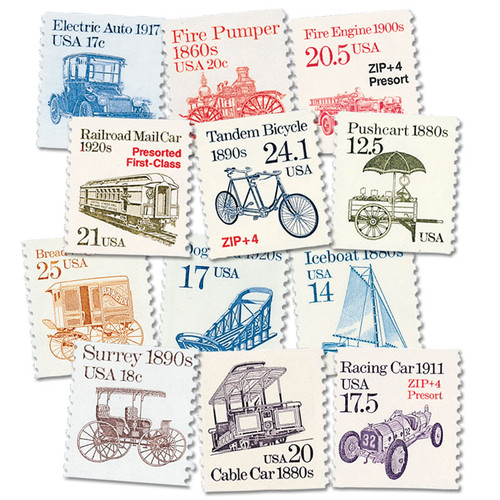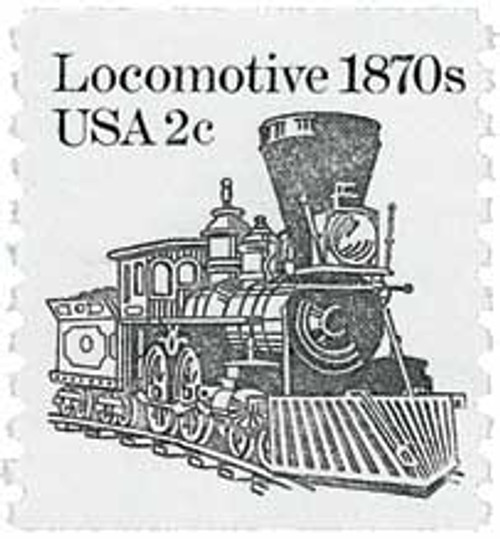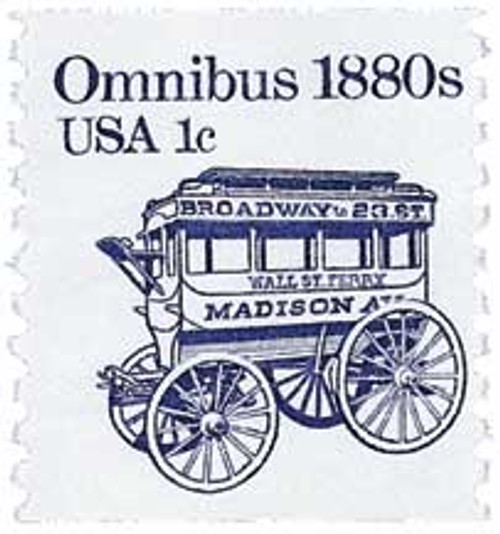
# 1908 FDC - 1981 20c Transportation Series: Fire Pumper, 1860s
1981 20¢ Fire Pumper
Transportation Series
City: Alexandria, VA
First National Fire Prevention Day Proclamation
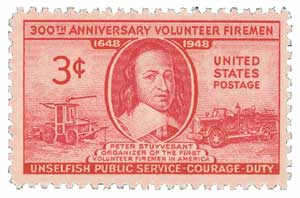
On October 9, 1920, President Woodrow Wilson declared issued the first presidential proclamation of Fire Prevention Day. Fire Prevention Day is held in October to commemorate and remind us of the Great Chicago Fire of 1871.
The fire started on October 8, 1871, at around 9:00 pm in or near the barn of the O’Leary family. Fire officials were never able to figure out the exact cause of the fire. Some theories include that the family’s cow knocked over a lantern or that a group of men were gambling in the barn and knocked over a lantern. Others suggest the fire was linked to other fires in the Midwest that same day.
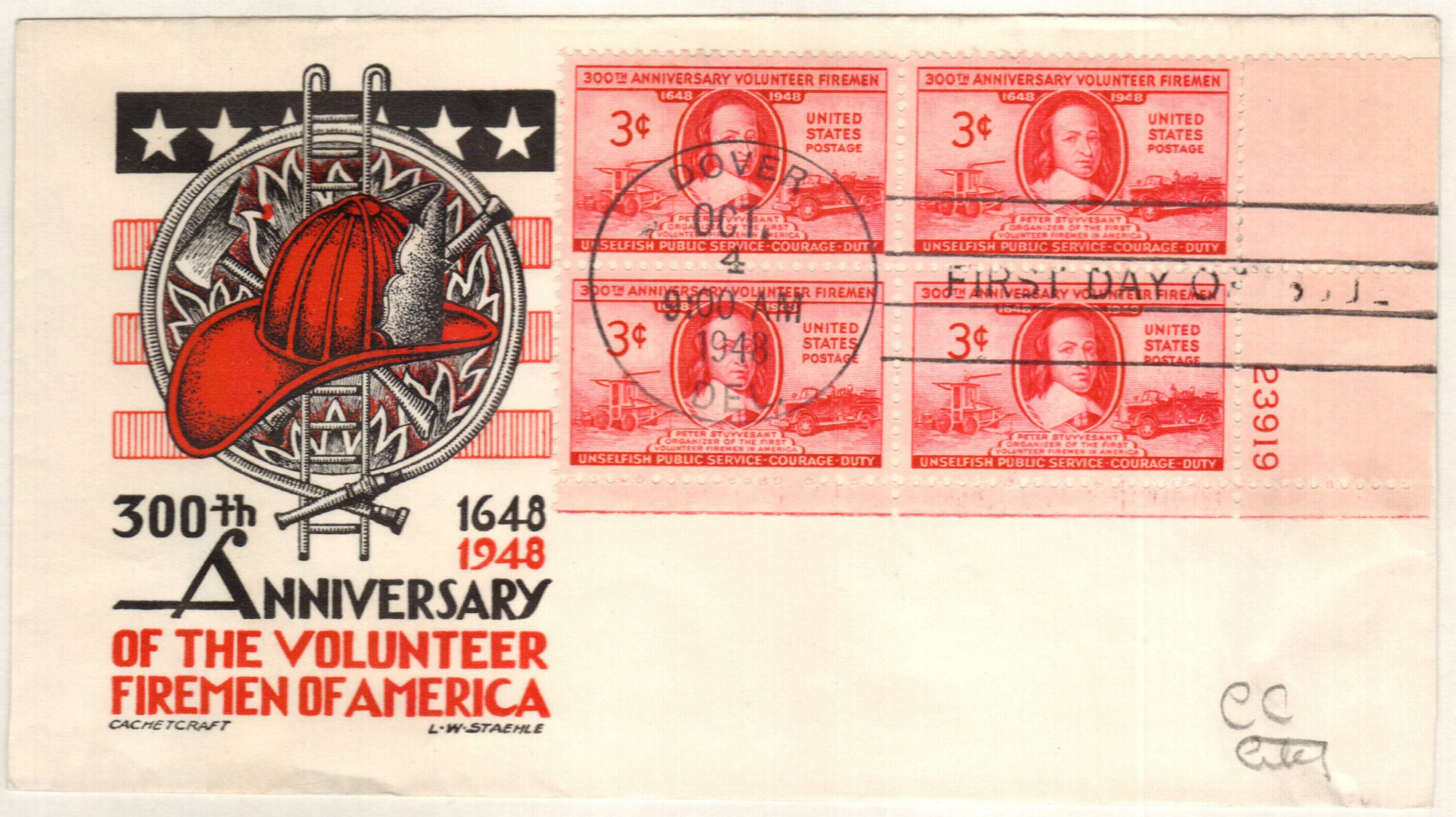
The fire would spread very quickly due to several factors. There had been a long drought that summer and the flames were strengthened by strong winds from the southwest. The fire also quickly destroyed the city’s water pumping system, which set the firefighters back in their attempts to put out the fire. And much of the city’s buildings were made of wood and topped and with tar, plus the sidewalks and roads were made of wood.
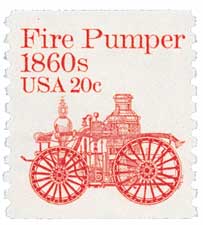
At the time of the fire, Chicago’s Fire Department had 185 firefighters and 17 horse-drawn steam engines to protect the city. Unfortunately, they were sent to the wrong location, which allowed the fire to spread in their absence.
The fire moved quickly, through lumberyards, warehouses, and coal yards. At one point, it developed a fire whirl, a spinning tornado-like phenomenon created from rising overheated air meeting cooler air above. This lifted flaming debris high into the air, allowing it to blow across the river and spread even farther.
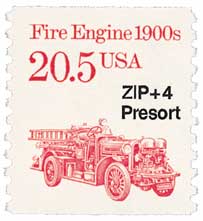
The worst of the damage was done on October 9. After the city’s waterworks were burned down, there was little the firefighters could do. However, by this point, the fire began to burn itself out and it began to rain. The fire would continue into the next day and it would be several days before the building remains would be cool enough to be surveyed.
In all, the fire stretched across an area four miles long and about ¾ of a mile wide, covering over 2,000 acres. It destroyed over 73 miles of road, 17,500 buildings, and caused $222 million dollars in property damage. At least 300 people were killed and about 90,000 were left homeless.
Yet, Chicago was quickly rebuilt. In fact, the effort to reshape the city attracted many of the world’s greatest architects. Chicago rose again to become the nation’s second-largest city and its architectural capital. And within two decades, Chicago would host the 1893 World’s Fair, showing the world just how well they had risen from the ashes of the fire.
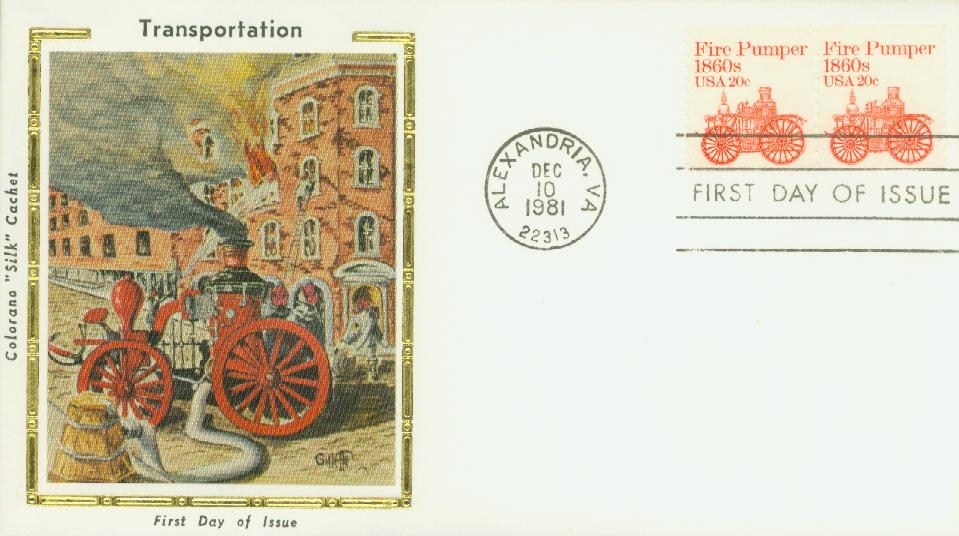
The first instance of a Fire Prevention Day came on the 40th anniversary of the fire in 1911. That year, the Fire Marshalls Association of North America staged the event to remind the public about the importance of fire prevention. In 1919, several fire prevention groups, including the National Fire Protection Association (NFPA) and the Dominion Fire Prevention Association (DFPA) called on the American and Canadian governments to create a Fire Prevention Day.

President Woodrow Wilson answered this call in 1920 when he proclaimed October 9 to be National Fire Prevention Day. He called on the states to prepare education presentations to inform the public about the importance of fire prevention. In 1925, the event was expanded to Fire Prevention Week. Each year, the week in which October 9 falls is celebrated as National Fire Prevention Week.
Click here for more about Fire Prevention Week from the NFPA website.
Click here to read Wilson’s 1920 proclamation.
1981 20¢ Fire Pumper
Transportation Series
City: Alexandria, VA
First National Fire Prevention Day Proclamation

On October 9, 1920, President Woodrow Wilson declared issued the first presidential proclamation of Fire Prevention Day. Fire Prevention Day is held in October to commemorate and remind us of the Great Chicago Fire of 1871.
The fire started on October 8, 1871, at around 9:00 pm in or near the barn of the O’Leary family. Fire officials were never able to figure out the exact cause of the fire. Some theories include that the family’s cow knocked over a lantern or that a group of men were gambling in the barn and knocked over a lantern. Others suggest the fire was linked to other fires in the Midwest that same day.

The fire would spread very quickly due to several factors. There had been a long drought that summer and the flames were strengthened by strong winds from the southwest. The fire also quickly destroyed the city’s water pumping system, which set the firefighters back in their attempts to put out the fire. And much of the city’s buildings were made of wood and topped and with tar, plus the sidewalks and roads were made of wood.

At the time of the fire, Chicago’s Fire Department had 185 firefighters and 17 horse-drawn steam engines to protect the city. Unfortunately, they were sent to the wrong location, which allowed the fire to spread in their absence.
The fire moved quickly, through lumberyards, warehouses, and coal yards. At one point, it developed a fire whirl, a spinning tornado-like phenomenon created from rising overheated air meeting cooler air above. This lifted flaming debris high into the air, allowing it to blow across the river and spread even farther.

The worst of the damage was done on October 9. After the city’s waterworks were burned down, there was little the firefighters could do. However, by this point, the fire began to burn itself out and it began to rain. The fire would continue into the next day and it would be several days before the building remains would be cool enough to be surveyed.
In all, the fire stretched across an area four miles long and about ¾ of a mile wide, covering over 2,000 acres. It destroyed over 73 miles of road, 17,500 buildings, and caused $222 million dollars in property damage. At least 300 people were killed and about 90,000 were left homeless.
Yet, Chicago was quickly rebuilt. In fact, the effort to reshape the city attracted many of the world’s greatest architects. Chicago rose again to become the nation’s second-largest city and its architectural capital. And within two decades, Chicago would host the 1893 World’s Fair, showing the world just how well they had risen from the ashes of the fire.

The first instance of a Fire Prevention Day came on the 40th anniversary of the fire in 1911. That year, the Fire Marshalls Association of North America staged the event to remind the public about the importance of fire prevention. In 1919, several fire prevention groups, including the National Fire Protection Association (NFPA) and the Dominion Fire Prevention Association (DFPA) called on the American and Canadian governments to create a Fire Prevention Day.

President Woodrow Wilson answered this call in 1920 when he proclaimed October 9 to be National Fire Prevention Day. He called on the states to prepare education presentations to inform the public about the importance of fire prevention. In 1925, the event was expanded to Fire Prevention Week. Each year, the week in which October 9 falls is celebrated as National Fire Prevention Week.
Click here for more about Fire Prevention Week from the NFPA website.
Click here to read Wilson’s 1920 proclamation.






